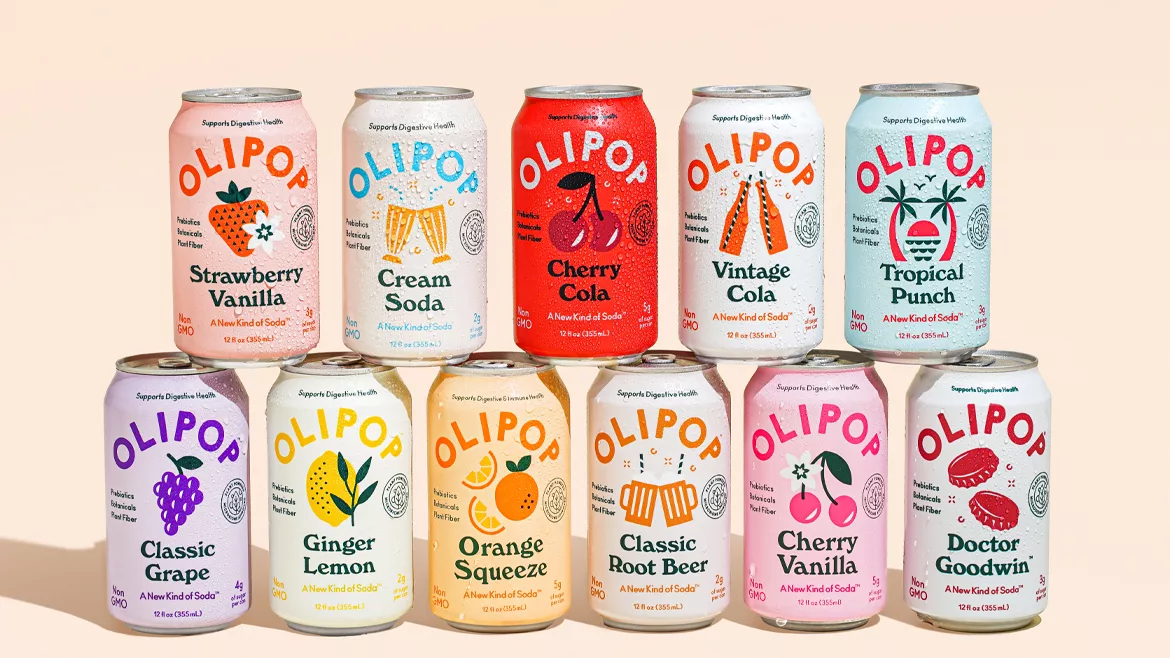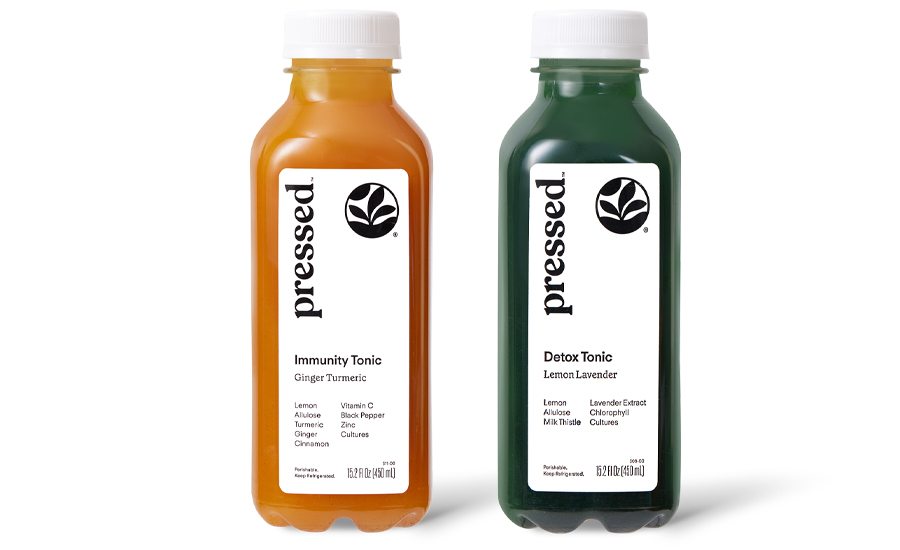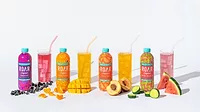Category Focus
Growing consumer awareness propels gut-health beverages to new heights
Opportunity abounds to educate consumers on pro- and prebiotic differentiation

Image courtesy of OLIPOP
The social media platform TikTok announced last March that more than 150 million Americans are active monthly users on the app. With such a reach, it’s no wonder that the social media platform is playing such an important role driving awareness on a number trends, and the beverage market isn’t any different.
“Between December 2022 and January 2023, the hashtag #guttok surpassed 700 million views on TikTok,” says Ben Goodwin, co-founder, CEO and formulator of OLIPOP, pointing out how much consumer awareness of probiotics and prebiotics has grown over the year.
This also has helped OLIPOP’s consumer awareness.
“Notably, searches for ‘OLIPOP’ also spiked on Google during this period,” Goodwin says.
Roger Dilworth, senior analyst at Beverage Marketing Corporation (BMC), Wintersville, Ohio, and New York, elaborates that probiotic and prebiotic awareness is not an overnight success but has been taking place over the past decade.
“While not universal, consumer awareness for probiotics and prebiotics have increased tremendously since 2004, and has grown appreciably in the past 10 years,” he says. “Awareness of ingredients such as lactobacillus and inulin is also growing to a lesser extent.”
Noting that the pandemic likely contributed to people researching health topics, Dilworth notes that consumers have become more aware and interested in gut health and the ingredients that support it. This interest has played a role in development in the pre- and probiotic beverage market.
“A general interest in health also appears to be contributing to the rise in prebiotic sparklers,” Dilworth says. “It is not clear to what extent consumers are differentiating between ‘probiotic’ and ‘prebiotic’ but they seem to be aware that the product is ‘more healthy’ and more likely to try them for the first time especially at a time when the price gap between conventional and functional sodas has narrowed.”
OLIPOP’s Goodwin also notes that the differentiation between prebiotics and probiotics still requires further education as consumers learn more about these digestive health ingredients.
“Despite this heightened awareness, there is still confusion regarding the distinction between prebiotics, probiotics and their respective benefits. Anecdotally, we’ve seen quite a few of our consumers refer to OLIPOP as a ‘probiotic’ soda,” he explains. “However, we don’t have any fermentation that would qualify us as a probiotic food or beverage like yogurt, kimchi or kombucha.”
While not universal, consumer awareness for probiotics and prebiotics have increased tremendously since 2004, and has grown appreciably in the past 10 years. Awareness of ingredients such as lactobacillus and inulin is also growing to a lesser extent.”
— Roger Dilworth, senior analyst at Beverage Marketing Corporation
Despite some confusion, prebiotic fiber looks to be on the rise as well as the products that incorporate them.
“The prebiotic fiber market size is currently $7.08 billion and is projected to reach $19.9 billion by 2033,” Goodwin says. “Consumer intelligence is on the rise, as today’s shoppers have a keen understanding of nutrition and preference for functional beverages. This trend is evident in OLIPOP’s real-time experience, reflected in our growth (223% growth from the end of 2021 to the end of 2022), and heightened consumer demand for innovative flavors. In fact, we have even surpassed Pepsi and A&W in sales at a national retailer in 2023, which is a true testament to how consumer preferences are shifting.”
Noting the market performance of pre- and probiotic beverages, BMC’s Dilworth anticipates more growth for the category.
“The market has grown at roughly a 10% clip in the past several years, so could continue to grow in the high single digits in the next several years,” he says.

Analyzing the potential
Although the pandemic or viral social media posts can be linked to pro- and prebiotic beverages’ growing market, any categories progression features varying layers that contribute to that performance. OLIPOP’s Goodwin, for instance, explains that although consumers are more conscious of the ingredients in products, taste still plays an important factor.
“We’ve observed a growing number of individuals becoming more mindful of the ingredients they consume,” he says. “However, consumers still seek to experience the flavors and tastes of their upbringing. We’ve witnessed incredible results as the demand for our product extends beyond the traditional ‘health food’ shopper, as evidenced by 10% of OLIPOP shoppers completely replacing conventional soda.
“This shift highlights the broader appeal of ‘better-for-you’ options among consumers, showcasing a widespread willingness to switch from traditional brands that may negatively impact their health while still satisfying their cravings,” he continues.
Goodwin adds that, although he is passionate about the potential for pro- and prebiotic beverages, it is not lost on him the importance to meet consumers “where they are.”
“If the taste is not appealing or if the product fails to fulfill a specific need for consumers, it could limit its potential,” he says. “In our case, considering that soda has a 98% household penetration, indicating its widespread presence, we have the opportunity to potentially replace the experience for consumers without the associated negative health implications.”
The amalgamation of function with flavor has helped OLIPOP create a product that appeals to a broader consumer base.
“While younger generations like Gen Z and millennials generally show more interest in our functional soda, OLIPOP successfully bridges the generational gap,” Goodwin says. “We achieve this by tapping into people’s enduring love and nostalgia for soda, recreating the familiar soda experience they grew up with. By providing this soda alternative that truly tastes delicious without any sacrifices, we expanded the appeal of the category to reach a broader spectrum of consumers across different age groups.”
Although OLIPOP notes it diverse consumer demographic, BMC’s Dilworth notes that typically carbonated prebiotic beverages have skewed toward younger generations, but more mature generations have a deeper association with probiotic ingredients.
“Probiotics are of longer vintage in the consumers’ mind, dating back to the Dannon yogurt commercials of the 1970s, so likely skew older than prebiotic sparklers that are marketed to younger adults through social media and bright packaging,” he says.
Given probiotics timeline vantage point, the ingredient has found itself in a diverse range of beverage categories.
“In addition to dairy drinks, juice and kombucha, probiotics are being added to no-alcohol beverage shots and even water, for example, Karma Wellness Water,” he says.
But no matter what beverage category looks to make the next splash in the pro- and prebiotic beverage market, it is safe to say the category will continue to make headlines.
Looking for a reprint of this article?
From high-res PDFs to custom plaques, order your copy today!




1170x658.webp?height=200&t=1676389560&width=200)

